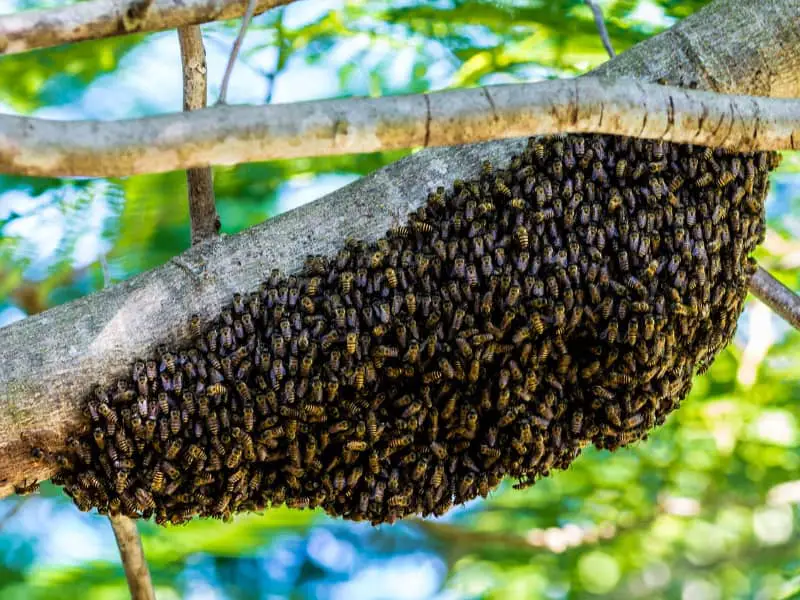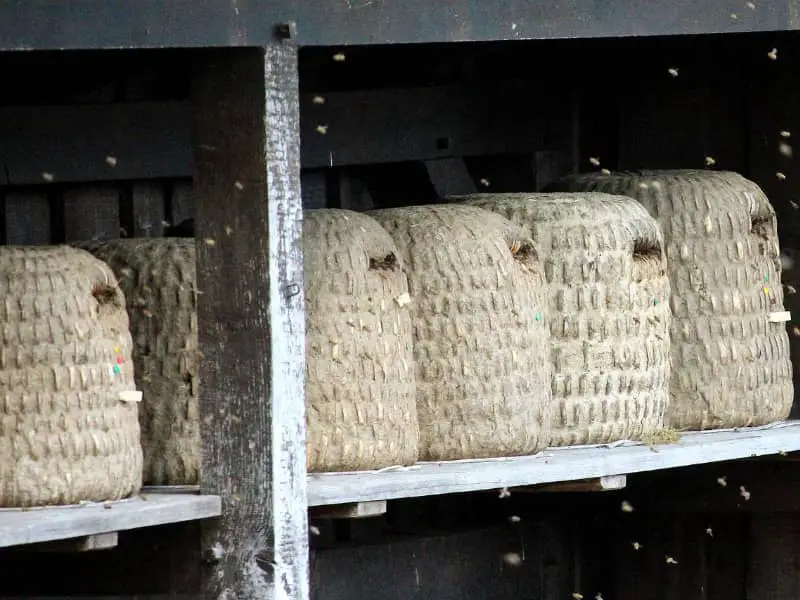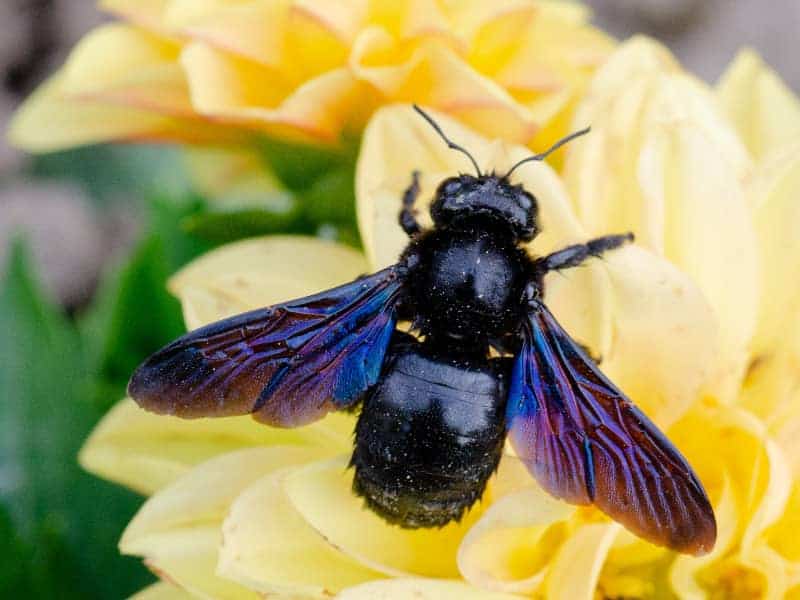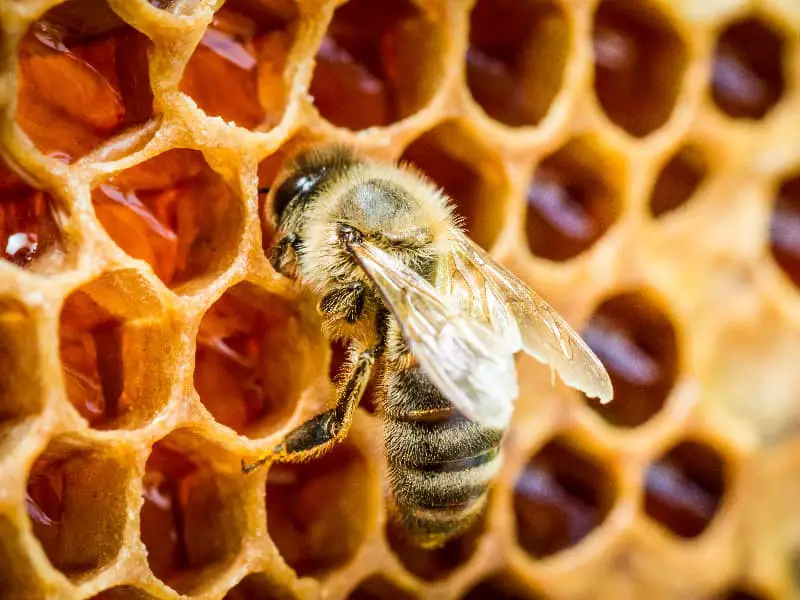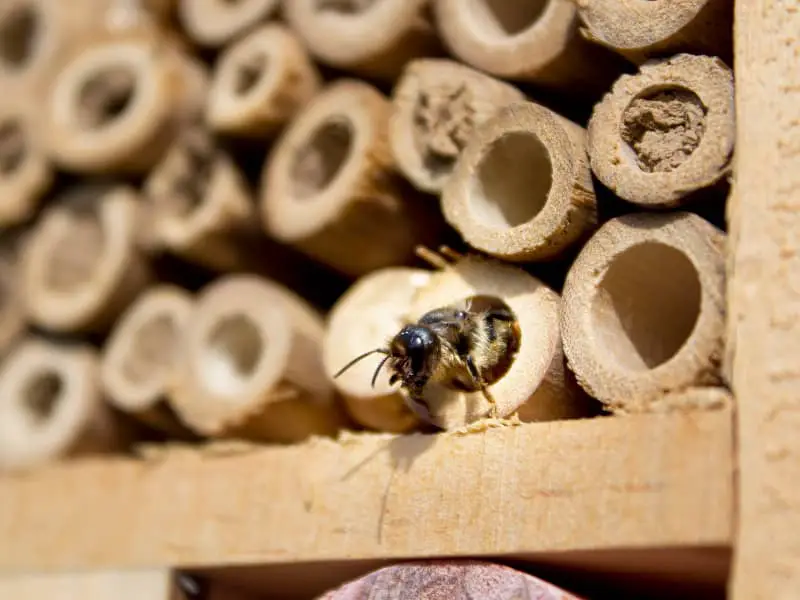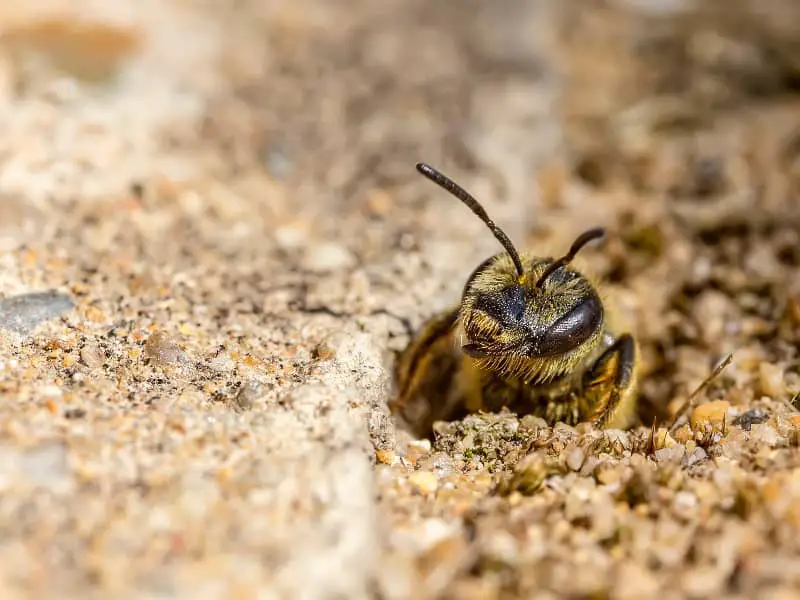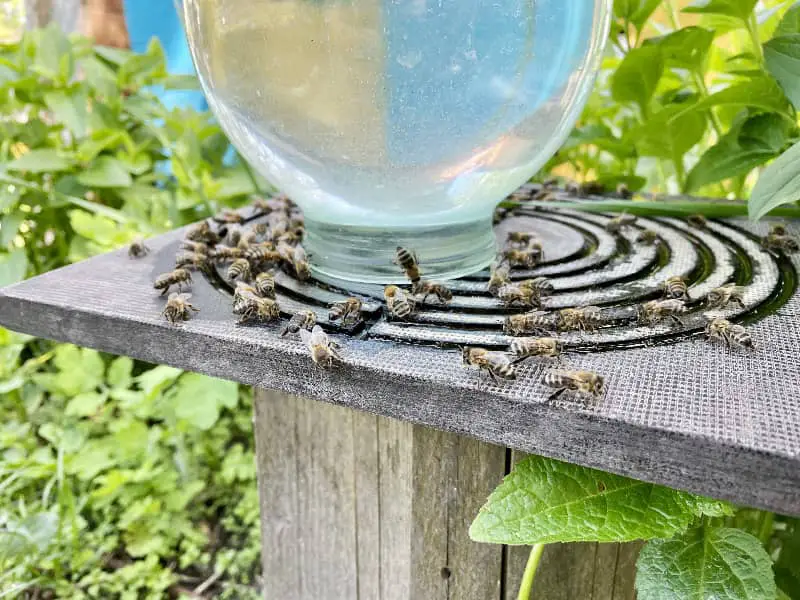
Bee trough
The summer heat is here, and while we love to stay in cool places or enjoy refreshing drinks, we can't forget about an important group: Our bees. These busy workers are responsible for the majority of our pollination and play a crucial role in our ecosystem. But what to do when bees can't find enough water? That's where the bee trough comes in.
Why do bees need water?
Many people think of bees mainly in terms of honey production and pollination. But like all living things, bees need water to survive. Water is important for bees for several reasons:
- Cooling of the hive: On hot days, workers fetch water to cool the inside of the hive. They distribute the water in small drops and then fan their wings to cool the hive.
- Dilution of the honey: Sometimes the honey can be too tough for the young bees. With the help of water it is diluted so that it becomes easier to digest.
- Brood support: Water is also necessary for the rearing of the young bees. It helps to provide food for the larvae and maintain the right environment in the hive.
What is a bee trough and why is it important?
A bee watering trough is a water source set up specifically for bees and other insects. While bees can drink water from a variety of sources, such drinkers ensure that they are easily accessible and safe.
In urban areas or places with limited natural water sources, it can be difficult for bees to find water. In addition, water sources that seem safe for us humans - like swimming pools or birdbaths - can be dangerous for bees, as they can drown in them. Therefore, special bee troughs are a great way to help the Bees in your garden or to help on your balcony.
How to design an effective bee drinking trough?
Creating a bee trough is simple and can be done with few materials. The most important thing is to ensure safety and accessibility for the bees.
- Water source: A shallow container such as a saucer or shallow dish works well. The water should be renewed daily to ensure freshness.
- Stones or pebbles: To prevent bees from drowning in the water, stones or pebbles should be placed in the container. These provide the bees with safe landing sites from which they can drink.
- Shady spots: Place the watering trough in a location that gets partial shade during the day. This prevents the water from evaporating too quickly and provides a cooler place for the bees to drink.
- Far from pesticides: Make sure the watering trough is far away from plants that have been treated with pesticides. This ensures that the water is safe for the bees.
Can other insects use the trough?
Yes, definitely! Bee watering holes are not just for bees. Other pollinators and insects such as butterflies, wasps and beetles can also benefit from these water sources. It is important to note that while bees are peaceful drinkers, some other insects, especially wasps, can be more aggressive.
It is also possible that birds will occasionally take a sip from the waterer. However, this can be avoided by keeping the drinker smaller or placing it in an area that is less accessible to birds.
The right location for your bee trough
The location of the bee trough can make all the difference. It should not only be shaded, but also protected from predators. Birds, especially those that eat insects, can threaten bees that come to the trough. A sheltered area or a location that is difficult for larger animals to access is ideal.
Seasonal adjustments
Depending on the season and climate, bees' needs and behaviors may vary. In dry periods or during heat waves, bees are likely to need more water. Therefore, during such periods, it is especially important to check and refill the watering trough regularly.
During the colder months, on the other hand, when the bees are less active, it may not be necessary to attend to the watering trough. However, it is always good to provide it in case some bees need water.
Alternative water sources for bees
Although bee troughs are excellent, bees also seek other sources of water in the wild. These include small puddles, moist soil, or dew drops on plants. Some gardeners intentionally create "mud patches" by occasionally watering an area of their garden to create moist soil for bees and other insects. Such natural water sources can be provided in addition to the bee watering trough.
Community action
Another interesting approach is to work with neighbors or community groups to raise awareness about the importance of bee troughs. Through collaborative actions, entire neighborhoods or communities can be made more bee-friendly. Workshops, information sessions, or community garden projects can help make larger areas safe and accessible for bees.
What other measures can be taken to protect bees?
While a bee feeder is a fantastic way to support bees, there are many other ways you can help. Planting bee friendly flowers, avoiding pesticides or setting up bee hotels are just a few examples. Every little action counts when it comes to supporting and protecting our precious pollinators.
Bees are essential to our ecosystem and our daily lives. By giving them access to clean water, we help facilitate their work and keep their populations healthy.
No products found.
Conclusion: Every bee trough counts
Unsere Bienen sind unverzichtbare Bestäuber, die eine entscheidende Rolle in unserem Ökosystem und der Nahrungskette spielen. Trotz ihrer winzigen Größe haben sie einen immensen Einfluss auf unsere Umwelt und unser tägliches Leben. Die Bereitstellung von Bienentränken ist nur ein kleiner, aber bedeutender Schritt, um ihnen in einer immer urbaner werdenden Welt zu helfen.
Indem wir ihnen sichere und zugängliche Wasserquellen bieten, unterstützen wir nicht nur ihre täglichen Aktivitäten, sondern zeigen auch unsere Wertschätzung und unser Bewusstsein für die Natur. Gleichzeitig eröffnen die Bienentränken auch Möglichkeiten, das Bewusstsein in der Gemeinschaft zu erhöhen und gemeinschaftliche Bemühungen zum Schutz der Bienen zu fördern.
Schließlich liegt die Verantwortung für die Gesundheit und das Wohlergehen unserer Bienen nicht nur bei den Imkern, sondern bei uns allen. Durch kleine, bewusste Handlungen wie das Aufstellen einer Bienentränke können wir sicherstellen, dass diese fleißigen Insekten weiterhin blühen und unsere Welt bereichern.
Author
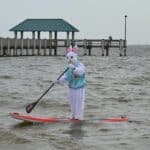
-
Garden animal - A life with nature
Welcome to my animal blog! My name is Dirk and I am happy to take you on my journey through the fascinating world of animals and gardening.
Born 54 years ago, I have had an insatiable curiosity for the animal world around me since childhood. Although I have moved professionally in other industries, my true passion has always been animals and nature. It is remarkable how a small garden has become such an important part of my life.
Many of my fondest memories are associated with the animals that share our home. Whether it's the curious squirrels that scurry across the trees in the morning, the colorful variety of birds that visit our feeders, or the busy bees and butterflies that pollinate our flowers, every moment with them is invaluable to me.
This blog is my contribution to share my experiences, discoveries and insights with like-minded people. Here I will share stories of unforgettable encounters with animals, give tips on gardening and creating wildlife-friendly habitats, and take you on my journeys through nature.
Thank you so much for being here!
Cordial,
Dirk aka garden animal
Last posts
- 27. February 2024PetsVeganes Hundefutter – Grün und Gesund?
- 18. January 2024ChickensOregano für Hühner
- November 27, 2023HamsterDiurnal hamsters
- November 24, 2023HamsterHamster hammock
Letzte Aktualisierung am 2025-12-24 / Affiliate Links / Bilder von der Amazon Product Advertising API

